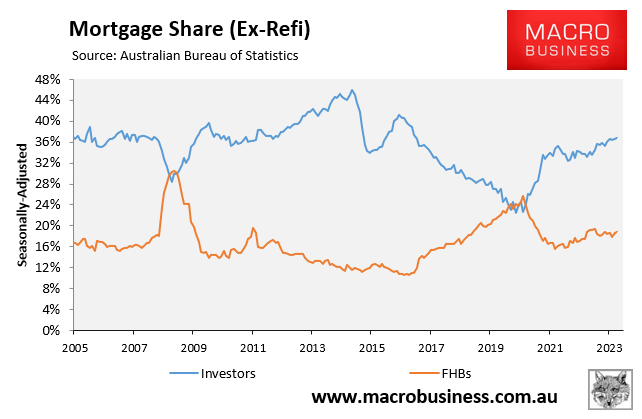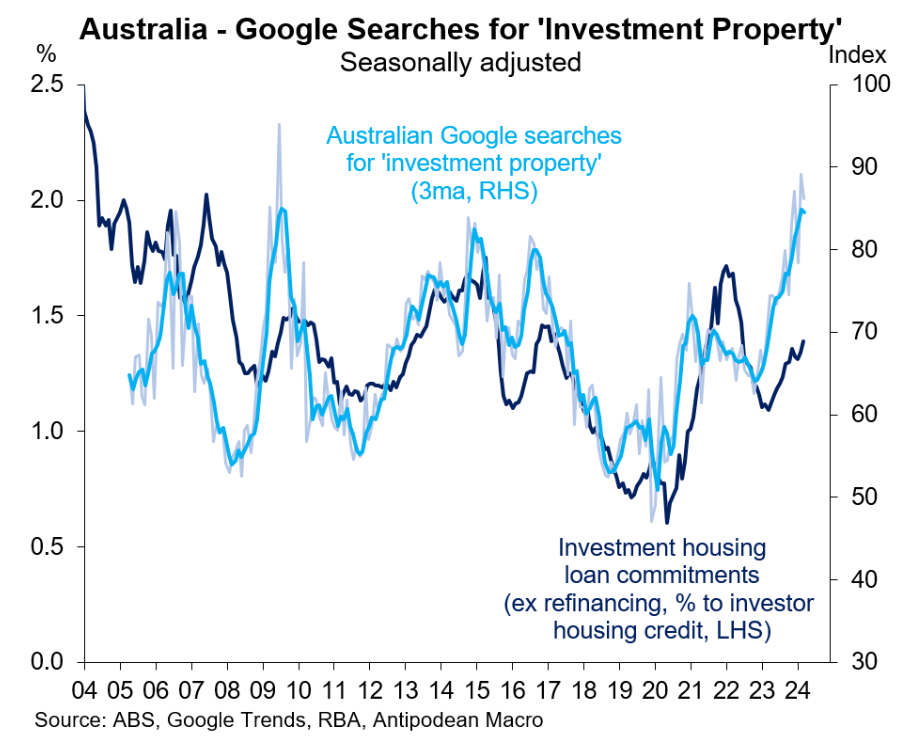The AFR reports that demand for homes priced under $800,000 is expected to increase in the coming months as investors and first-home buyers return to the market and compete for affordable stock.
CoreLogic research director Tim Lawless said stronger-than-expected house price growth in the past 15 months and expectations of further capital gains were enticing investors back, while the tight rental market prompted more renters to buy.
“We’re already seeing competitive pressure to the lower end of the marketplace where investors and first time buyers tend to be more active, which could be behind the recent stronger gains in that segment”, he said.
The current interest rate levels typically limit borrowing capacity to around $750,000 for most investors and first-home buyers, depending on their financial situation.
This has made the sub-$800,000 price point hot property (pardon the pun).
“I expect demand for properties priced under $800,000 to increase substantially and become even more competitive as more buyers are priced out of the market”, Scott Kuru, co-founder of Freedom Property Investors said.
“I think this is the sweet spot for most investors and first-home buyers because of the limited borrowing capacity due to high interest rates”.
“These affordable markets are generating a lot of interest because they have strong fundamentals such as low supply and strong demand, but more importantly, they are affordable for people who have limited borrowing capacity”, Arjun Paliwal, head of research at InvestorKit said.
“Investment properties in these areas are also achieving healthy rental yields, making it easier for investors to hold them particularly if rates stay higher for longer”.
The latest housing finance data from the Australian Bureau of Statistics (ABS) supports this view.
The value of investor mortgage commitments jumped 31.1% in the year to March, easily outpacing the 11.4% growth reported for owner-occupiers:

Investor mortgage demand continues to outstrip demand from first-time buyers (FHBs).

Investor mortgage commitments totalled $10.2 billion in March, nearly double the $5.2 billion of commitments recorded by FHBs.
The following chart shows the inverse correlation between investor mortgages and FHB mortgages. This suggests that investors are crowding-out FHBs:

Meanwhile, Australian Google searches for “investment property” have soared to record levels on a three-month moving average basis, suggesting that investors are becoming more active in the market:

And who can blame them when rental yields continue to rise amid hyper rental inflation:

Source: CoreLogic
Investors are looking at the juicy combination of rising property prices, rising rents and yields, and interest rate cuts late this year or early next.
It is a disaster for FHBs and strengthens the case to tighten negative gearing and the capital gains tax discount.

